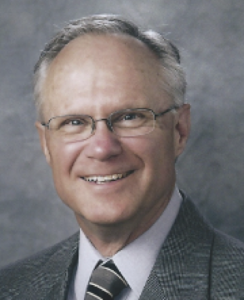Riley Anesthesia Procedure Manual, 1st ed. 1995
Forward
William McNiece, M.D.; Gopal Krishna, M.D.; and Julie Dunlap, M.D.

This manual is derived from work done by Thomas (Tom) M. Wolfe, M.D. Dr. Wolfe was a native of Indiana who achieved the rank of Eagle Scout. He received his undergraduate degree from Purdue University in 1969 and his Medical Doctorate from Indiana University in 1974. His post-graduate education was at Indiana University, which included a surgical internship, a residency in anesthesiology and a fellowship in pediatric anesthesiology. He joined the Division of Pediatric Anesthesia at Riley Hospital in July 1978 becoming the fifth member of the Division. For most of his career, Dr. Wolfe, along with all other Division anesthesiologists, provided a full range of pediatric anesthesia care – neonates, adolescents, cardiac anesthesia, acute pain management, transplant anesthesia, and respiratory critical care. Only at the latter portion of his career did the Division begin to utilize subsections for the delivery specific areas of pediatric anesthesia care. He had continuing interests in management of the difficult pediatric airway and burn patients, a particular talent in the education of the neophyte pediatric anesthesiologist and was a career-long advocate for operating room efficiency. He served the Division continuously for thirty-five years until his retirement in 2013.
Dr. Wolfe’s wife, Mary Lynn Wolfe, M.D., was a radiologist with fellowship training in neuroradiology. They had three sons including John Wolfe, M.D., an anesthesiologist at University Hospital. They had a lovely home in Hancock County on property that included a pond and many trees that Tom had planted. Tom enjoyed flying, woodworking and gardening while Mary Lynn enjoyed music and needlework. They were gracious hosts and for many years welcomed Division members and particularly new fellows to a late summer picnic at their home. Tom delighted in giving rides through the property on his four-wheeled “Gator” and in introducing children of division members to fishing in his pond. He enjoyed an active retirement until the time of his death in 2018.
Dr. Wolfe was recognized as a skilled and knowledgeable pediatric anesthesiologist. While short in physical stature, he stood tall in his enthusiasm for pediatric anesthesiology. He took both patient care and physician education to be important parts of his work at Riley. As part of that, he began writing the Riley Anesthesia Procedure Manual sometime prior to 1995. Residents and former residents sometimes referred to it as “Dr. Wolfe’s Anesthesia Manual”. The first paragraph of the manual read:
“Purpose: This manual was compiled to facilitate understanding of standard operating procedures for anesthesia in Riley Children’s Hospital. It is an abbreviated outline that gives you some feel for how to set up a case. The more important issues of why we do it this way are left for your study. This manual does not substitute for your independent study of pediatric anesthesia and is not a peer-reviewed document.”
The Manual included a series of densely printed sections on various topics related to pediatric anesthesia, most running two or three pages. All reflected Dr. Wolfe’s practice at Riley Hospital for Children. The sections were primarily written to help residents learn how to take care of patients when they rotated at Riley. Each section started with a short introduction to the topic, a listing of anesthetic considerations of the factors involved, a how-to list, and concluded with one or more references related to the topic. A resident who had never done a particular kind of case could look at the section, gain a basic understanding of anesthetic considerations involved, learn about an anesthetic approach that could be used, and some idea of how to set up for the anesthetic. The italics in the previous sentence reflect Dr. Wolfe’s use. The resident would always staff the patient and the anesthetic with the attending anesthesiologist prior to the anesthetic.
Importantly, the purpose of the Manual was to help the resident understand standard approaches to anesthetic care at Riley and how to set up for the anesthetic. It provided content on how to but not much on why. The why was left to discussions with attendings and independent reading of cited references.
The Manual’s content was solely Dr. Wolfe’s work. However, he always invited input from both residents and attendings on how to improve its content. Over time, many of the sections were revised once or several times. Ultimately, he added sections resulting in a more inclusive manual of nearly 100 pages. Former residents who were in practice would regularly contact Dr. Wolfe for updated copies some times years after finishing their anesthesiology residencies. This substantiates the value of Dr. Wolfe’s work and the recognition it has received over the years.
After more than a decade without revision, a number of the attending pediatric anesthesiologists have worked together to produce a newly revised version of Dr. Wolfe’s Riley Anesthesia Procedure Manual. Renamed for the second edition as Pediatric Anesthesia Manual to permit dissemination and publication with compliance of hospital, university, and government copyright laws. We have revised content to reflect current practice at Riley, added a few new sections, updated references, and included the newest authors. While it no longer is the work of a single author, Dr. Wolfe’s stated Purpose for the Manual has remained the guide for this revised Manual’s content.
William McNiece, M.D.
Gopal Krishna, M.D.
Julie Dunlap, M.D.
